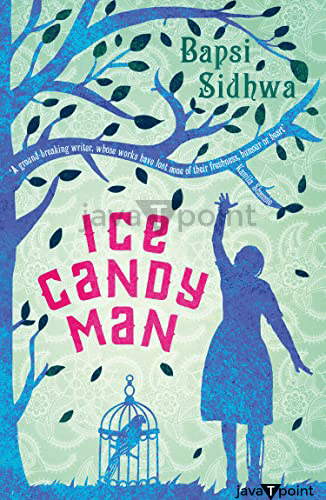Ice Candy Man SummaryIceman Candy is a novel that pictures and explains the condition of India and Pakistan during the civil war or protests or riots due to the India- Pakistan partition. The novel, a renamed version of Cracking India by Bapsi Sidhwa, was first published in the 1980s. The book "Cracking India" (initially published as "Ice-Candy-Man" in 1980) written by Bapsi Sidhwa delves into the brutal civil war that took place during the Partition of India in 1947. 
Ice candy man is a story of a historical event that marked a period or timeline of political and social turmoil, which was done to give independence and lead to the subsequent division of the country. The story of the ice man candy gives us a brief narrative of the results or consequences of religious intolerance and religious outbreak, which further led to violence and dangas in many parts of the country which called for widespread violence, and massacres around the country mainly regions of high intense areas such as Kashmir and Punjab, brutal killings of infants, child, men, and women. Millions of Hindus from Pakistan have had refuge in parts of north India while Muslims fled to Pakistan, which caused massive flee of people across the newly created borders. Narrated from the perspective of Lenny Sethi, a young Parsee girl, the novel depicts the intricate and ever-changing political and social consequences of the Partition of India. It took so much that it divided the country into India, the Hindu majority, and the Muslim- majority Pakistan. Lenny shares her experience of how Lahore, which was initially in India, is now closely transforming into Pakistani Lahore, and its transformations have made it more different. The novel explores the historical events and serves as a coming-of-age tale, delving into Lenny's personal growth and forming her identity amid a changing nation. Both Lenny and Pakistan undergo significant struggles as they navigate through the turmoil. Lenny's innocent perspective quickly matures as she witnesses the violence, loss of friends, and betrayal among neighbors due to religious differences. The devastating toll of dividing a nation along religious lines is vividly portrayed, affecting Hindus, Muslims, Sikhs, Christians, and Parsees alike as they all strive to survive. As a minority group, the Parsee community initially seeks alliances with other ethnic groups for protection but ultimately chooses to remain neutral, hoping to remain inconspicuous. The early part of the novel presents Lenny's idyllic childhood as a nostalgic backdrop, showcasing the peaceful coexistence and religious harmony that existed in Lahore before the independence and Partition. Lenny's sheltered and secure upbringing mirrors the peace shattered by the violence of Partition. This contrast emphasizes the subsequent horrors of religious intolerance, with Sidhwa using Lenny's life as a microcosm to explore the broader civil war. The novel also draws parallels between personal and societal relationships. Lenny's nursemaid, Ayah, attracts a diverse group of admirers, mirroring the complex ethnic composition of both India and Pakistan. The breakdown of society into violent ethnic and religious factions reflects the fracturing of previously harmonious relationships in Lenny's world. The novel delves into how people interact in society and focuses on different aspects of life, such as caste, religion, and ethnicity. It clearly explains how some people often feel left out when they are of a different caste or religion. It sheds light on the subjugation of women through practices like child marriages and prostitution while also addressing themes of sexuality and the dangers of politically motivated violence. By presenting the narrative through a child's voice and perspective, Sidhwa approaches India and Pakistan's complex histories, social complexities, and political nuances with humor and compassion. However, Lenny's childhood is marred by numerous horrors once Partition occurs. These horrors culminate with Lenny's devastating betrayal of her beloved Ayah by the Ice-candy man and his Muslim accomplices. She is very sorry for what she has done, and even her family is shocked about the things she has done. In the final part of the story, the novel highlights the collective efforts of women in Lahore, transcending ethnic and religious boundaries, to mend the wounds inflicted during the Partition and its aftermath. Recognizing that painful truths are often shielded from children, her mother conceals her endeavors after Lenny's actions have eroded trust. She engages in dangerous and illicit black-market trading to earn money, which is used to rescue women trapped in enforced prostitution and sexual slavery. Lenny remains unaware of her mother's clandestine activities until the novel's end, when her Godmother reveals her influential position by locating and liberating Ayah from the clutches of the Ice-candy-man. Ayah is eventually sent back to her family in Amritsar, India, through her mother's courageous work. This revelation serves as a beacon of hope for the future of Pakistan, as it demonstrates that these women unite in support of one another, transcending divisions of ethnicity and religion. The women in Lahore band together, demonstrating resilience and compassion, working towards repairing the damage inflicted by the Partition. Their collective efforts signify a promising future, where unity and solidarity prevail over differences, offering hope for a more inclusive and harmonious society.
Next TopicDesiderata -poem-summary
|
 For Videos Join Our Youtube Channel: Join Now
For Videos Join Our Youtube Channel: Join Now
Feedback
- Send your Feedback to [email protected]
Help Others, Please Share









